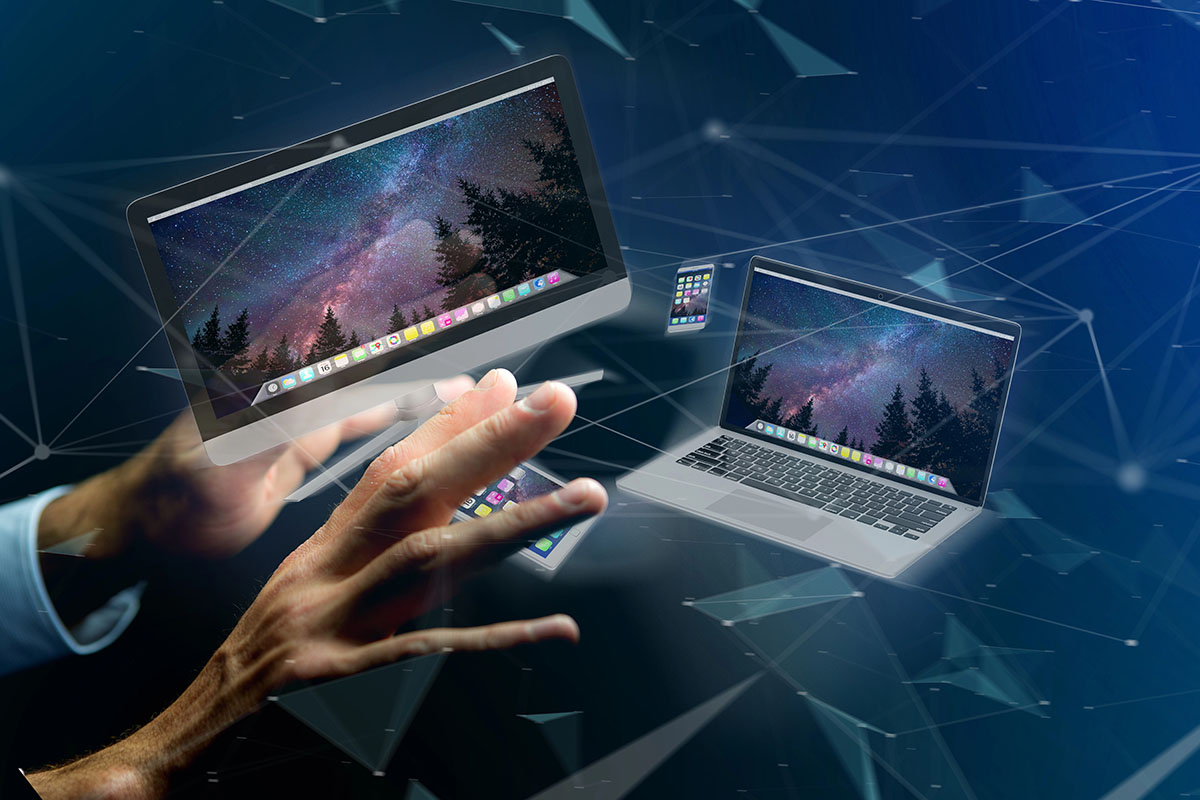

Eugene IT Consulting: Strategies to Protect Against Tariffs



Tariffs have had a significant impact on technology procurement, causing organizations to face challenges due to increased costs. The recent US trade policies imposing tariffs on electronics, specifically a 20% tariff on Chinese-made tech products like laptops and smartphones, have directly affected IT budgets.
Prices of business laptops have gone up by $200 or more per device, putting financial resources under strain. In this situation of rising costs, it has become integral to adopt cost-effective IT procurement strategies with the helpf of Eugene IT consulting specialists to navigate these challenges effectively.
These strategies not only help in managing immediate budget constraints but also offer long-term sustainability in the face of tariff uncertainty. With a proactive approach towards procurement and device lifecycle management, organizations can ensure smooth operations while optimizing costs in a high-tariff environment with the help of outsourced IT in Eugene OR.
Understanding Tariffs on Technology Procurement
In early 2025, a 20% tariff was imposed on Chinese-made tech products, targeting key items such as laptops, smartphones, and other essential devices. This tariff directly increased the cost of these products as manufacturers and distributors passed the additional expense onto buyers. For example, business laptops saw price increases exceeding $200 per unit, significantly altering procurement budgets.
The impact of this tariff extends beyond mere pricing. IT departments face:
- Strained budgets: With hardware costs rising unpredictably, project planning becomes more complex.
- Volatility in pricing: Fluctuating fees make it difficult to forecast expenses accurately.
- Altered refresh cycles: Some organizations delay upgrades to avoid immediate tariff shocks, while others accelerate purchases to beat further hikes.
These challenges demand alternative procurement strategies that can absorb or bypass tariff-related cost pressures. Simply continuing with traditional buying patterns risks overspending or encountering supply chain disruptions. Organizations must consider options such as diversifying vendors outside China, stockpiling inventory before further price increases, or turning to refurbished and certified pre-owned devices to maintain operational continuity without excessive budget strain.
Strategies for Cost Control in Device Procurement
Mitigating the financial impact of tariffs requires a flexible and strategic approach to device procurement. Here are some effective strategies to consider:
1. Cross-Vendor Flexibility
Relying on multiple suppliers allows you to avoid over-dependence on tariff-affected sources, opening opportunities to source devices from regions with lower or no tariffs. This approach reduces vulnerability to sudden price hikes and supply chain disruptions.
2. Strategic Timing
Purchasing devices in bulk before tariff increases or during promotional windows helps lock in lower prices. Bulk buying also enables volume discounts and better negotiation power with vendors, easing the strain on IT budgets.
3. Device Lifecycle Management
Extending device use through maintenance and refurbishment delays costly replacements, stretching IT asset value while tariffs remain volatile.
4. Leasing Options
Leasing options such as Device-as-a-Service (DaaS) models and traditional leasing provide flexibility by transforming capital expenses into predictable operating expenses. DaaS bundles hardware, support, and lifecycle services under one contract, insulating organizations from the full brunt of tariff-driven price shocks. Leasing also facilitates easier upgrades and replacements without large upfront investments.
Mitigating Tariff Effects Through Device Lifecycle Management
Extending the lifecycle of devices is a powerful approach to counteract the financial strain imposed by tariff volatility. When you maximize the usable life of laptops, smartphones, and other tech assets, you reduce the frequency and urgency of costly refresh cycles. This strategy lowers immediate capital expenditures while maintaining operational capability. For example, organizations delaying device replacement from three to four years can save hundreds of dollars per device, mitigating the 20% tariff impact on new purchases.
Responsible recycling and resale practices complement lifecycle extension by turning end-of-life equipment into revenue or cost offsets. Instead of discarding hardware, refurbishing devices to OEM standards enables resale in secondary markets. This recaptures value and reduces waste, supporting sustainability goals alongside financial benefits. Certified pre-owned equipment accessed through trusted partners like PivIT Global avoids tariff costs altogether, offering a cost-effective alternative to new purchases.
Stockpiling surplus devices before tariffs hit or during price dips also plays a role in lifecycle management. By combining stockpiling with refurbishment and leasing options, you create a dynamic buffer against unpredictable price hikes and supply chain disruptions.
Key tactics include:
- Lifecycle extension of devices: Prolonging use through maintenance and upgrades.
- Responsible recycling and resale: Monetizing retired hardware via certified refurbishment.
Exploring Alternative Procurement Models
Device-as-a-Service (DaaS) models emerge as a strategic solution offering distinct advantages over traditional procurement methods:
Comparison of Leasing vs. Buying Devices:
Leasing:
- Provides flexibility in device upgrades and scalability.
- Enables predictable monthly expenses, easing budget constraints.
- Reduces upfront costs and potential financial risks.
Buying:
- Offers ownership of assets after the initial investment.
- Allows for customization and control over hardware specifications.
- May result in higher upfront costs but potentially lower total costs over the device’s lifecycle.
Exploring Device-as-a-Service (DaaS) Models:
DaaS:
- Shifts the focus from owning hardware to accessing it as a service.
- Includes hardware, software, maintenance, and support in a bundled offering.
- Facilitates seamless technology refresh cycles and ensures access to the latest innovations without large capital outlays.
The debate between ownership and Device as a Service model gains significance in the face of trade barriers. Organizations must carefully weigh the implications of each model on their financial sustainability and operational efficiency to navigate the turbulent waters of tariff-driven market fluctuations effectively.
Choose The Cost Structure That Works for You
Businesses should take proactive steps to protect their organizations from the negative effects of tariffs by using a combination of stockpiling, refurbishing, and leasing strategies.
By implementing these proactive measures, your business can effectively navigate the challenges posed by tariffs in technology procurement. Stockpiling allows for strategic inventory management, refurbishing extends the lifecycle of devices, and leasing offers flexibility amidst market uncertainties. This multi-faceted approach not only helps in controlling costs but also ensures operational continuity and budget stability.
Embracing these tactics empowers companies to safeguard themselves against the financial burdens imposed by tariff fluctuations, fostering resilience and adaptability with the help of Eugene tech support.
Use stockpiling, refurbishing, and leasing to strengthen your organization’s procurement strategy against the impact of tariffs.
Frequently Asked Questions About Tariffs
What impact do tariffs have on technology procurement and IT budgets?
Tariffs, such as the 20% tariff imposed on Chinese-made tech products, lead to increased prices on laptops, smartphones, and other devices. These price hikes strain IT budgets and create challenges for organizations in managing technology procurement costs effectively.
How can stockpiling help organizations shield against tariffs on electronic devices?
Stockpiling involves purchasing devices in bulk before tariff increases take effect. This strategy allows organizations to secure technology at lower prices, mitigating the financial impact of tariffs and ensuring continuity in device availability.
What role does refurbishing play in mitigating the effects of tariffs on IT procurement?
Refurbishing extends the lifecycle of existing devices by restoring them to good working condition. This practice reduces the need for purchasing new devices at higher tariff-inflated prices, offering a cost-effective alternative that helps manage IT budgets during periods of tariff volatility.
Can leasing or Device-as-a-Service (DaaS) models help control costs amid high tariffs?
Yes, leasing and DaaS models provide flexible procurement options that avoid large upfront costs associated with buying devices outright. These models allow organizations to adapt to changing pricing environments caused by tariffs while maintaining access to up-to-date technology through subscription-based services.
What is the importance of cross-vendor flexibility in device procurement strategies under tariff pressures?
Cross-vendor flexibility enables organizations to source devices from multiple suppliers, reducing dependency on any single market affected by tariffs. This approach enhances negotiating power, facilitates strategic timing and bulk purchasing, and helps optimize costs despite trade policy uncertainties.
Why should CTOs consider combining stockpiling, refurbishing, and leasing tactics to combat tariff challenges?
Combining these tactics creates a comprehensive strategy that balances immediate cost savings with long-term sustainability. Stockpiling secures inventory ahead of price hikes; refurbishing maximizes device value over time; leasing offers flexibility without heavy capital expenditure. Together, they effectively shield organizations from adverse effects of tariffs on technology procurement.
Table of Contents

